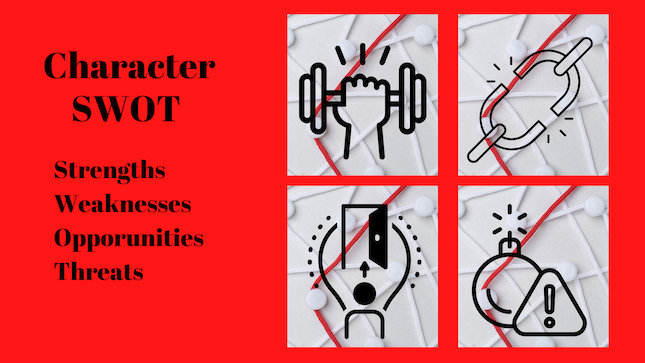How to Expand Your Story Idea

When The Story Idea Hits
In the middle of the night or while you’re on a walk, all of a sudden you have a new story idea.
When a writer has a new story idea, you think about your novel before you ever start writing. You’ll do bits of research. You’ll brainstorm how the story will work. You hear the voices of different characters. You think about what the book is about.
This process is an essential part of getting ready to write a story.
Before you start writing your novel, get organized. Get all your ideas down on paper, or virtual paper. Experienced writers know that memory is fallible. And with all the bits and pieces you have created, there are still holes in your story. Writing a novel is a process. Before you leap in, while you still have plot holes and unformed characters, get a good grasp of your story.
Start With A Sentence Summary
Before you start filling in the missing bits and pieces of your mystery, make sure you have a firm grasp on the story. Create a touchstone target for your story. Everything you write in your novel relates back to this baseline, and it’s only one sentence long.
Your one-sentence story will help you focus your creative efforts during the time when you plan and write your story. Knowing what your story is about will keep you on track when the inevitable rabbit holes pop up.
Even if you don’t figure out your storyline until after you write your first draft, it can be a powerful tool to help you cut out the nonessentials when you get to editing and revisions.
Frame your story sentence like this:
In a (SETTING) a (PROTAGONIST) has a (PROBLEM) (caused by an ANTAGONIST) and (faces CONFLICT) as they try to (achieve a GOAL).
Before you start your sentence, have each element clear in your head.
- Setting
- Protagonist
- Problem
- Antagonist
- Conflict
- Goal
This sentence is based on your main idea or theme. In other words, your story idea.
Here’s an example for Gorky Park by Martin Cruz Smith.
A Moscow homicide detective investigates a bizarre triple murder and runs afoul of the KGB and FBI.
Write your story sentence in 25-30 words. Leave out character names, subplots, or any other details. You are constructing the core of the story.
Once you formulate the base sentence, everything in your story stems from and relates to this story seed.
You may think that you know your story and have no need to write a base sentence. If so, you should be able to write the sentence in less than a minute. Go ahead, write the sentence.
Write it down as a reference point. Then save this sentence as your story guide. As you write, you can check that each scene relates to this base story idea.
The Paragraph Expansion
Once you have your one-sentence story idea, you can expand it to a paragraph with more details. Expand the sentence to a paragraph describing the story narrative, any major events, and the ending.
There’s a simple formula you can use to expand your sentence to a full paragraph. A good story will consist of:
- The exposition – the status quo at the start of the story
- The first plot point – what major event kicks off the story
- The mid-point – where things take a turn for the worse
- The second plot point – where your sleuth hits -rock-bottom and starts turning things around.
- Climax and denouement – how the story resolves
Using this formula, expand the sentence to a full paragraph. It’s worth putting time into getting this summary just right. You can always come back to revise it if things change, but having these plot signposts in place will help guide the next few steps.
These first two points will help you define the structure of the story.
From One Sentence to Five Sentences
Begin with the setup and go through the story to the end in five sentences.
- The first sentence sets up the story by introducing the lead characters and the story world.
- The second sentence summarizes the beginning and presents the first disaster to force a decision that frames the story question.
- The third sentence summarizes the first part of the middle, leading up to the second disaster.
- The fourth sentence summarizes the second part of the middle, leading up to the third disaster, which forces a decision to pursue the final confrontation.
- The fifth sentence explains how the story ends, including the final confrontation and any wrap-up that you feel you need to explain.
Writing Fiction for Dummies, Randy Ingermanson and Peter Economy, p. 153.
This structure is the framework for your storyline and all the scenes that build your story.
With this structure in place, start creating your scenes. As you brainstorm, the structure helps you find plot holes from places where you have yet to create a scene.
But don’t start writing yet. You need to know the people and places in your story.
Populate Your Story
Characters bring your story alive to your readers. Once you know your storyline, you need to populate your novel with characters. Create a Character Bible where you list all the characters in your novel. Start with your protagonist and antagonist, then add supporting characters. Be sure to note each character’s role in the story.
As you develop your story, you may add new characters, but for now, create a character background for your main characters.
- Protagonist – the main character who guides the reader through the story
- Antagonist – the main opposition to the protagonist’s goal
- Supporters – a sidekick, a mentor, a love interest, a best friend, an opponent who doesn’t like your protagonist, the antagonist’s helper
- Minor characters – characters who function mainly with setting to add verisimilitude: a doorman, cab driver, entry guard (building or magical forest)
Give each character a background in your character bible. Each character needs one readily identifiable distinguishing characteristic: e.g. mannerism, a style of speech, a physical detail. That detail helps your reader recall a character they last met 50 or 100 pages ago.
Personality traits humanize your characters. Readers recognize personalities, and that recognition helps them understand your characters. Some writers add details like the Meyer Briggs type to each of their main and supporting characters. Because each type has a set of personality traits, writers can build from those traits, especially character reactions when under pressure.
The Storyworld
Whether your novel is set in the present day, the past, or the future, know the basics of your story world. From the common culture and political structure to town maps and building floor plans to weather patterns and vegetation, the details of your story world ground your reader in the story.
Depending on your genre, the setting connects your reader to your hero’s world. Setting details can set the mood for a scene or reflect the culture of an antagonist. You help your reader enter the story when you create the location, time, and culture in each scene.
PRO TIP: On average, about 20% of background research ends up in a novel. Just because you know a setting detail don’t use it unless it fits in the scene. Long descriptive passages slow down your reader. Sprinkle your knowledge throughout the story.
Synopsis
Some writers write a detailed prose synopsis before they begin writing the novel. The synopsis covers the major points of the story. This way the author has a general idea of the story plot points. The synopsis varies in length, depending on the author, from 10 to 50 pages.
The exercise of writing the synopsis fixes the overall story in the writer’s head so they can attend to scene details during writing. The author knows what comes next and where the story is going.
Writing a synopsis is optional. However, the exercise can help discover plot holes or sequences that make little sense before beginning work on the novel.
The Story Idea Novel Build
Story ideas may arise from a character, a setting, or a particular situation. They pop into your head and won’t let go. Popular detective fiction author P. D. James said,
My own detective novels, with rare exceptions, have been inspired by the place rather than by a method of murder or a character…
Building out from the story idea helps arrange the various story parts around the central idea. Your idea grows into a structured story set in a believable world with engaging characters to lead your reader from beginning to end. And it all started with an idea.
Background preparation allows you to focus on writing each scene, the building blocks of your story, in a believable world with intriguing characters.
If this is your first story idea, don’t be daunted by the work. Writing a novel takes commitment and persistence. When you take the steps to build from your story idea, you’ll create a story readers will love.
Kyle Gregory Devaras on Unsplash





